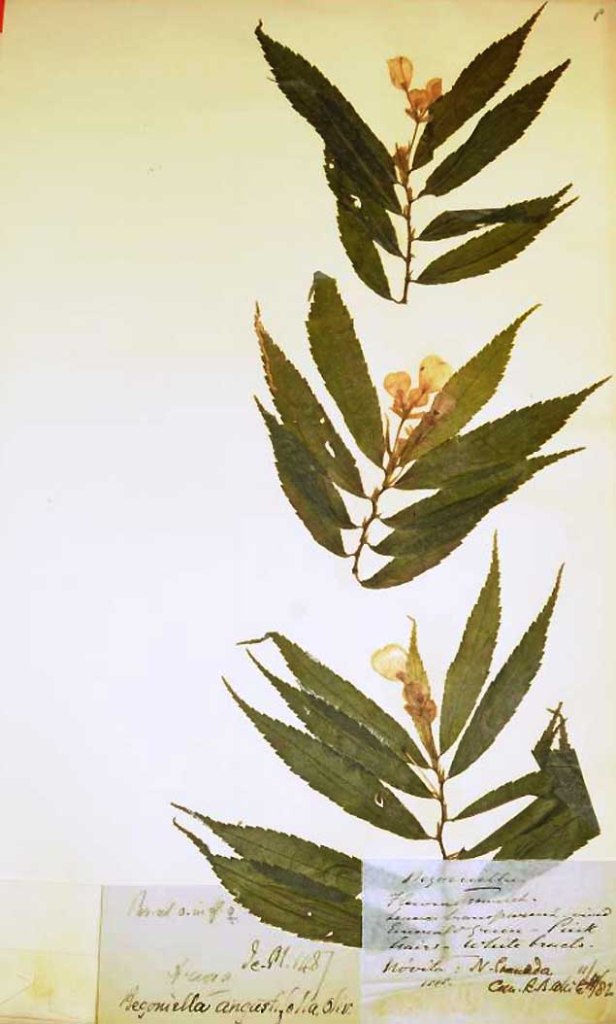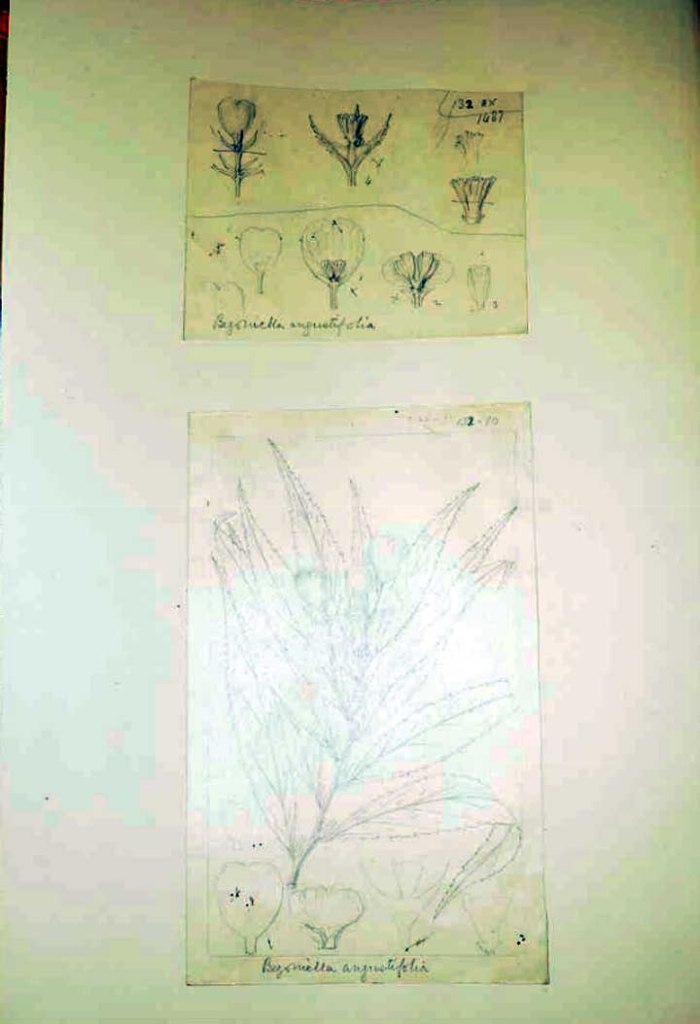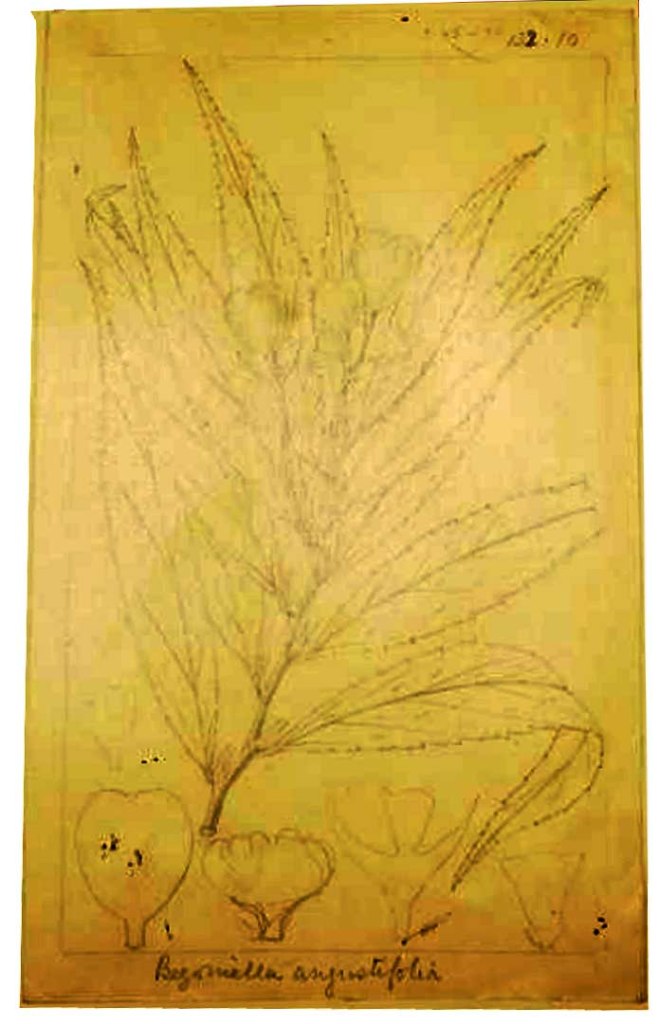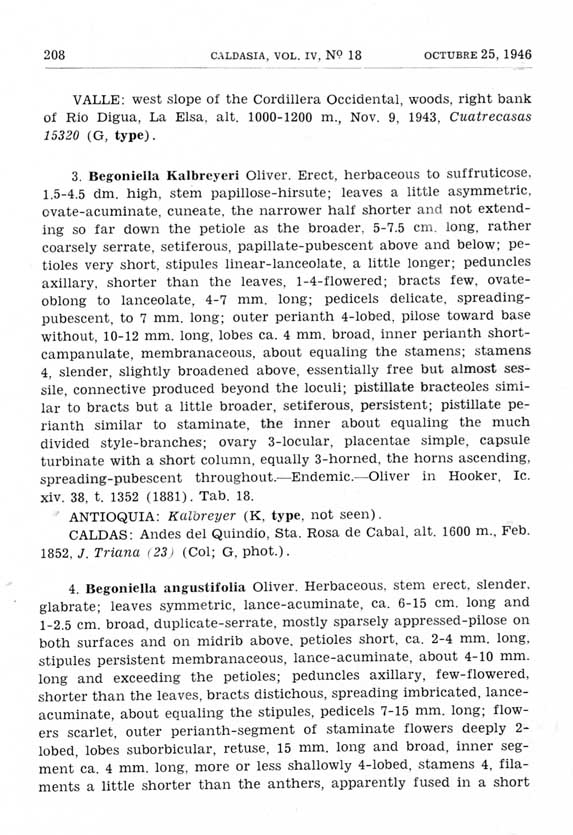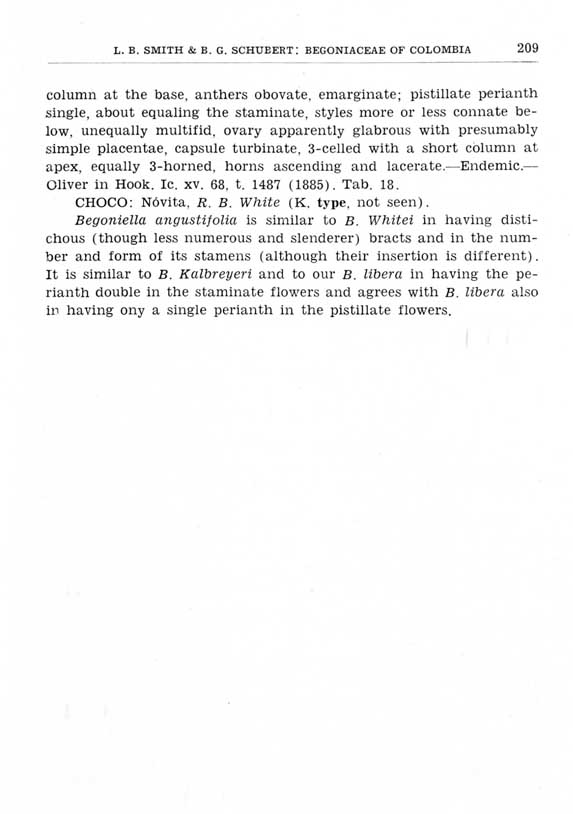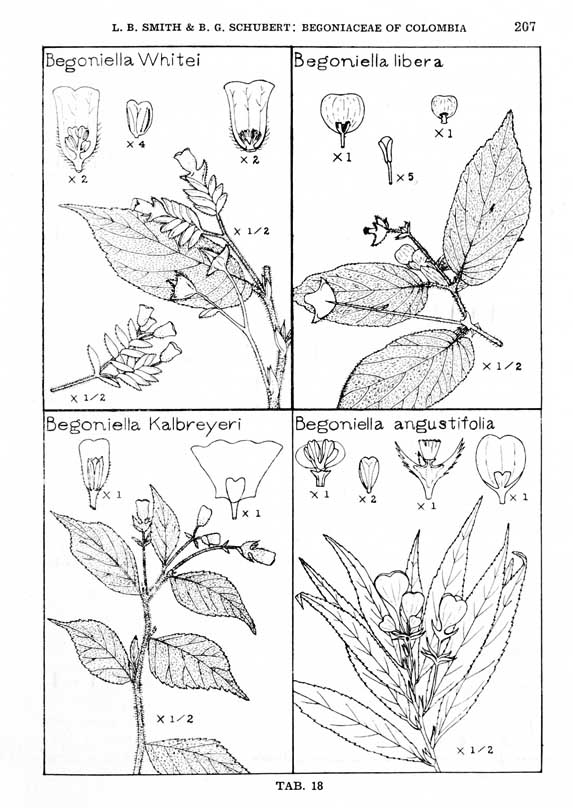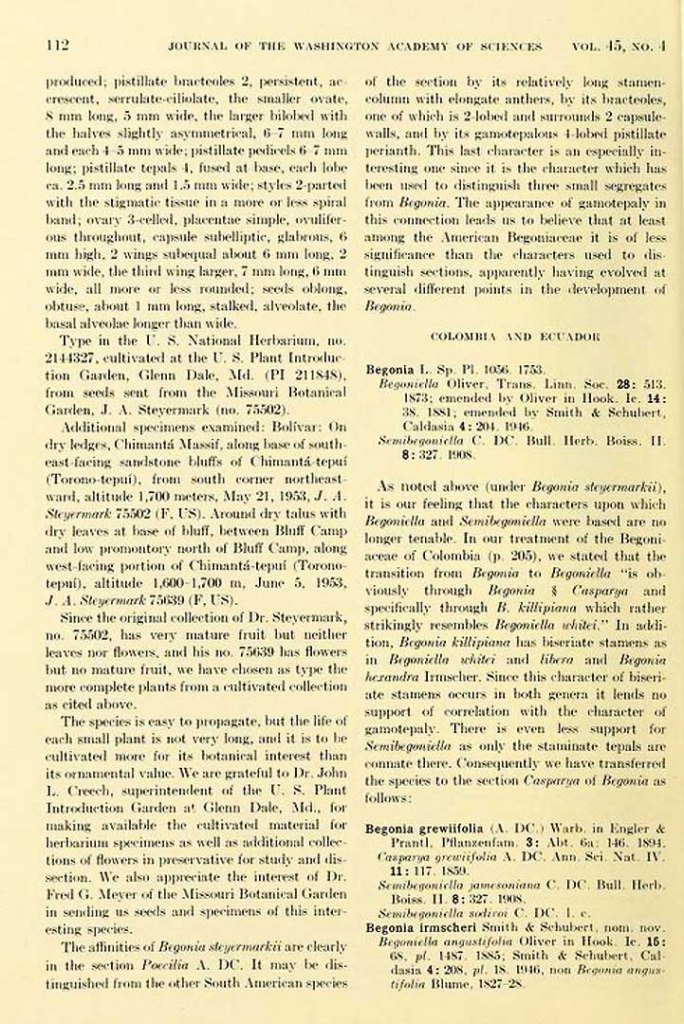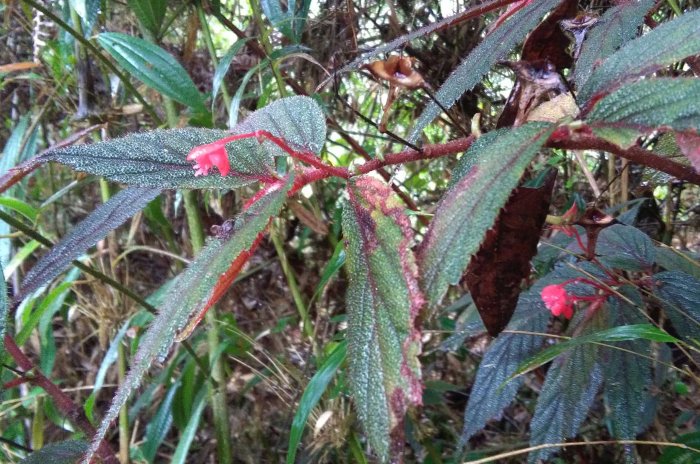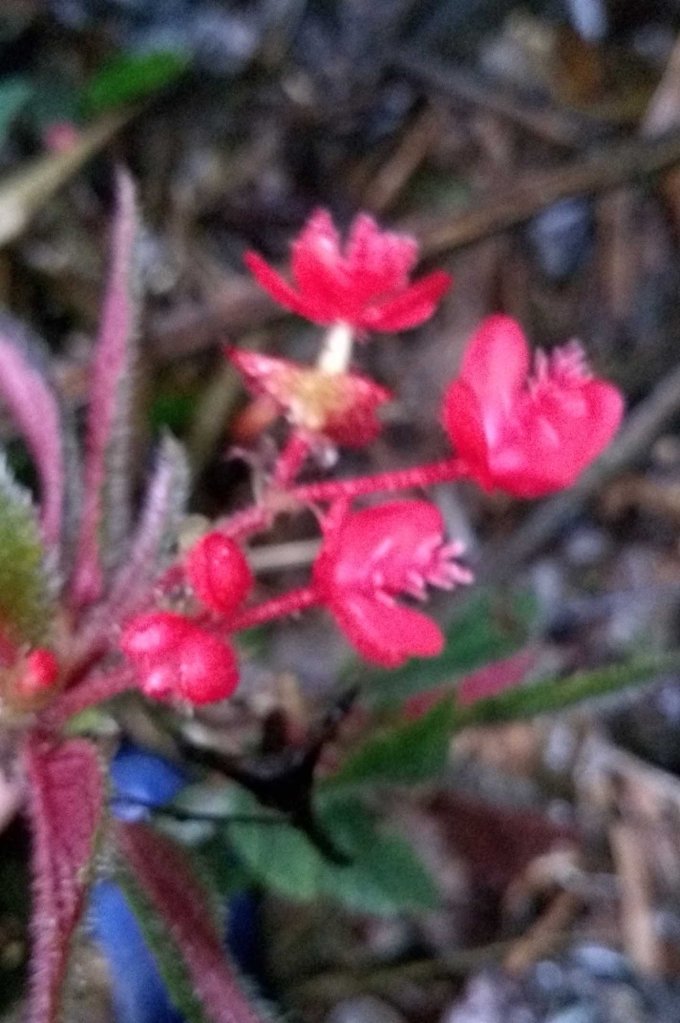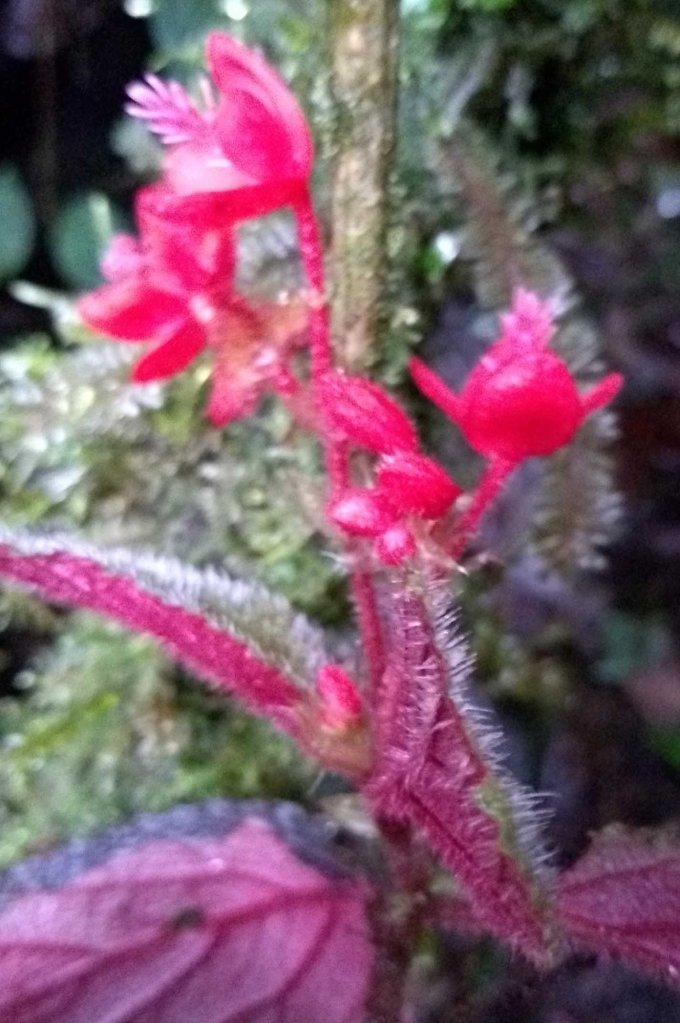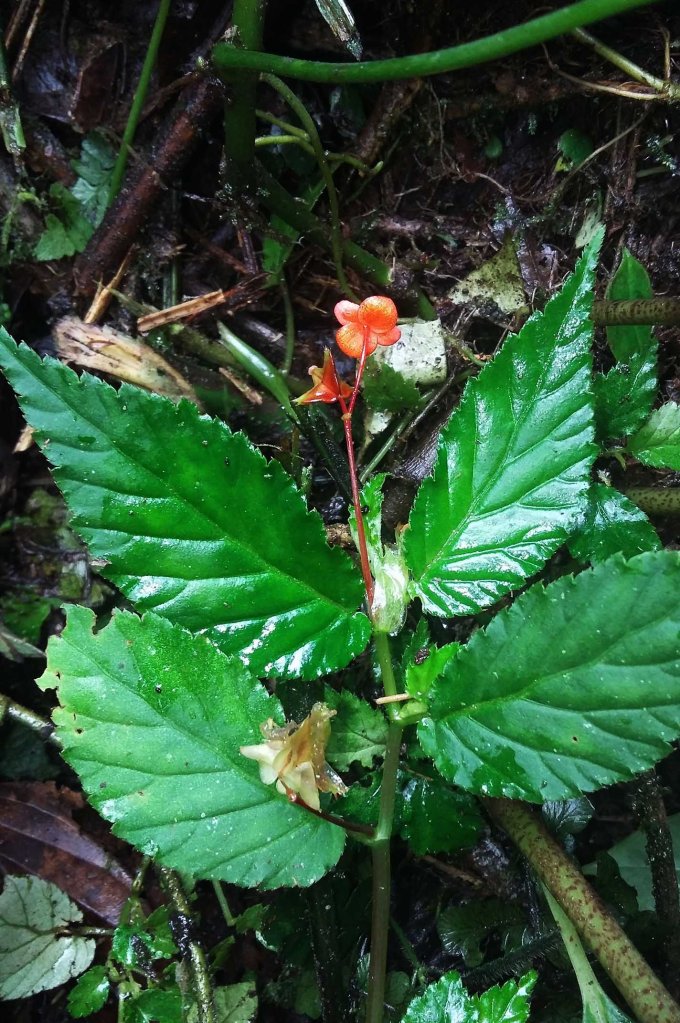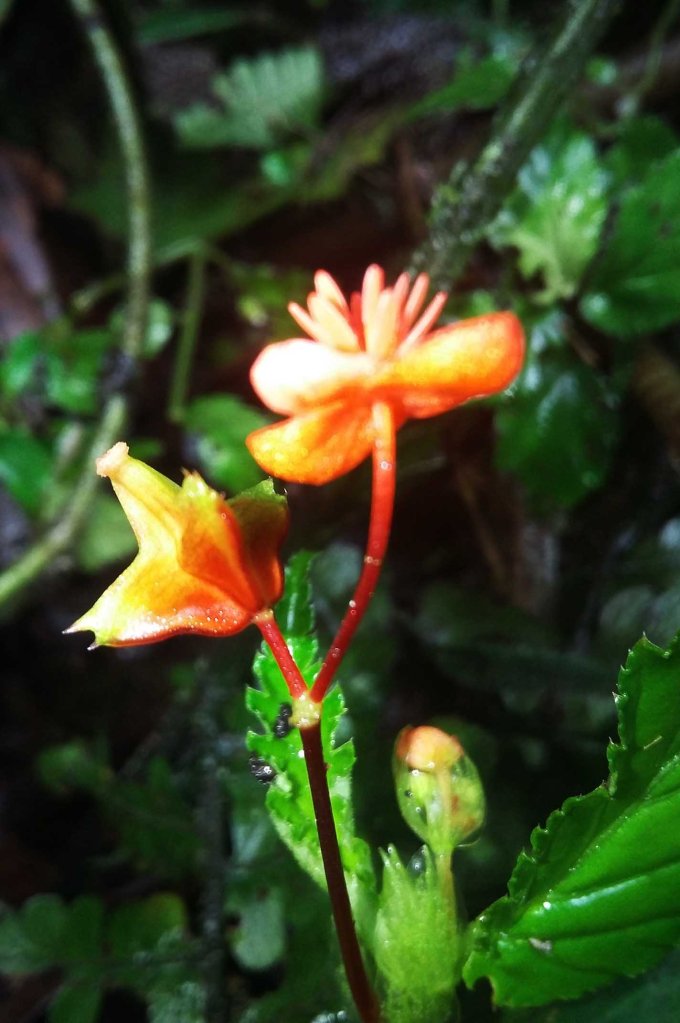
La plante a été découverte en Équateur par K. T. Hartweg dans la région de Pichincha. Cette espèce affectionne des clairières le long des ruisseaux dans la forêt pluviale, elle préfère vraiment les espaces ouverts où elles peuvent être facilement vues et accessibles aux petits oiseaux.

Karl Theodor Hartweg (1812-1871) est un botaniste allemand. Entre 1836 et 1854 il récolte de nombreuses espèces de plantes en Colombie, en Équateur, au Guatemala, au Canada, au Mexique, au Pérou et en Californie pour le compte de la Royal Horticultural Society. De nombreuses espèces qu’il découvre sont publiées, et attribuées, par George Gordon (1806-1879), le responsable du jardin de la Société et spécialiste des conifères, lesquels étaient bien représentés dans les collections d’Hartweg. George Bentham (1800-1884) décrira une grande partie de la collection appelée Plantae Hartwegianae. Le genre Hartwegia Lindl. est nommé en son honneur.

L’espèce a été dénommée et décrite en 1845 par G. Bentham dans Plantas Hartwegianas imprimis Mexicanas, page 185.
L’épithète spécifique signifie « au longs becs »
L’espèce avait été inclue dans la section Casparya (voir clef de détermination ci-dessous), mais elle figure désormais dans la section Semibegoniella.
Synonymes :
Begonia grewiifolia (A.DC.) Warb.
Casparya grewiifolia A.DC.
Casparya grewiifolia var. grewiifolia
Casparya grewiifolia var. jamesoniana A.DC.
Casparya grewiifolia var. pavoniana A.DC.
Semibegoniella jamesoniana (A.DC.) C.DC.
Semibegoniella sodiroi C.DC.
Homotypes :
Isopterix longirostris (Benth.) Klotzsch
Casparya longirostris (Benth.) A.DC.

Plante herbacée érigée, suffrutescente à tiges souples pubescentes, rugueuses, de 60 à 120 centimètres de long, stipules oblongs, feuilles obliques étroitement ovales, pointues, bords serrulés et ciliés, quelques fleurs mâles en ombelle, 2 tépales et 2 pétales rouge vermillon, fleurs femelles uniques avec 3 sépales et 2, ou 3 pétales glabres, capsule glabre, déprimée, à 3 ailes.


Ressemble à Begonia urticae var. urticae.



De loin, cette espèce ressemble à première vue à une gesneriacée. Mais les feuilles asymétriques ressemblent indéniablement à un Begonia. Les fleurs rouges attirent les colibris qui peuvent voir et préfèrent les fleurs rouges, lilas et violettes. Bien que la forme de la fleur de cette espèce particulière soit un peu tubulaire elle semble convenir aux becs de colibris locaux.

Multiplication par semis, marcotage, bouture de tiges feuillées.
Demande plus de lumière que la plupart des espèces de Begonias, et supporte assez bien un ensoleillement modéré, bonne plante pour paniers suspendus et culture sur un mur végétal.


The plant was discovered in Ecuador by K. T. Hartweg in the Pichincha area. This species likes clearings along streams in the rainforest, it really prefers open spaces where they can be easily seen and accessible to small birds.
Karl Theodor Hartweg (1812-1871) is a German botanist. Between 1836 and 1854 he harvested many species of plants in Colombia, Ecuador, Guatemala, Canada, Mexico, Peru and California for the Royal Horticultural Society. Numerous species that he discovered are published, and attributed, by George Gordon (1806-1879), the head of the garden of the Society and conifer specialist, which were well represented in the collections of Hartweg. George Bentham (1800-1884) will describe much of the collection called Plantae Hartwegianae. The genus Hartwegia Lindl. is named in his honor.
It was described in 1845 by G. Bentham in Plantas Hartwegianas imprimis Mexicanas, page 185.
The specific epithet means « long-nosed »
The species was included in the Casparya section (see determination key below), but is now included in the Semibegoniella section.
Synonyms:
Begonia grewiifolia (A.DC.) Warb.
Casparya grewiifolia A.DC.
Casparya grewiifolia var. grewiifolia
Casparya grewiifolia var. jamesoniana A.DC.
Casparya grewiifolia var. pavoniana A.DC.
Semibegoniella jamesoniana (A.DC.) C.DC.
Semibegoniella sodiroi C.DC.
Homotyps:
Isopterix longirostris (Benth.) Klotzsch
Casparya longirostris (Benth.) A.DC.
Erect herbaceous plant, suffrutescens with soft pubescent rough stems, 60 to 120 cm long, stipules oblons, obliquely narrow ovate leaves, pointed, cuffed and cuffed margins, some male flowers in umbel, 2 tepals and 2 petals vermilion red, flowers single females with 3 sepals and 2, or 3 petals glabrous, glabrous, depressed, 3-winged capsule.
Looks like Begonia urticae var. urticae.
From a distance, this species looks at first sight to a gesneriaceae. But the asymmetrical leaves undeniably resemble a Begonia. Red flowers attract hummingbirds that can see and prefer red, lilac and purple flowers. Although the shape of the flower of this particular species is a little tubular it seems to be suitable for local hummingbirds.
Propagation by seed, marcotage, cuttings of leafy stems.
Requires more light than most species of Begonias, and tolerates fairly moderate sunlight, good plant for hanging baskets and growing on a vertical garden.







